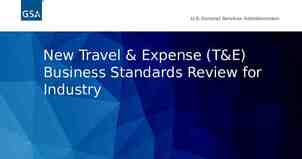Risk Management Presented by You Exec
33 Slides516.25 KB
Risk Management Presented by You Exec
Table of Contents II Introduction IIII › Types of Risk › Risk Categories IIIIII Risk Management Procedure IV IV Stakeholders Engagement › Risk Identification Tools & Practices › Risk Planning › Risk Identification › Risk Assessment › Risk Monitoring › Risk Tracking › Risk A
Introduction
Operational Strategic › › › › › › › › › › › Cost Overrun Operational Controls Capacity management Supply Chain Issues Employee Issues incl. fraud › Bribery and Corruption › Commodity prices Demand Shortfall Customer retention Integration problems Pricing pressure Industry downturn JV or partner losses Types of Risks › › › › › Macroeconomic Political Issues Legal Issues Terrorism Natural disasters Hazard › › › › › Debt and interest rates Financial management Asset losses Goodwill and amortization Accounting problems Financial
Internal & External Risks External Risks Demand Internal Risks Strategic Operational Enablers Governance Access to Services People Strategic Planning Processes Financial Ethics & Values Business Interruption Technology Stakeholder Relations Emergency Response Infrastructure Regulatory Economical Socio- Political Environment
Risk Categories Product Design System/ Software Manufacturing All Other Project Management Quality Product Performance Data Accuracy Assembly Consumer service Team work Quality system Design Security Tools Environment Product cost Sigma Levels Your text here Your text here Your text here Your text here Your text here Your text here Your text here Your text here Your text here Your text here Your text here Your text here Your text here Your text here Your text here Your text here Your text here Your text here
Identification of Risk Categories Risk Category Risk Sub Category Financial Financial Operational Operational Strategic Strategic Funding Capacity Capacity Availability Customer Retention Demand Shortfall 2 3 3 4 5 5 Likelihood Risk level Profitable Growth Low Price Develop New product Leverage Technology Risk Score by Risk Category
Risk Severity Dial Medium This slide is 100% editable. Adapt it to your needs and capture your audience's attention. Low High This slide is 100% editable. Adapt it to your needs and capture your audience's attention. This slide is 100% editable. Adapt it to your needs and capture your audience's attention.
Stakeholders Engagement
High Risk Appetite Medium Within Risk Appetite Low Impact Exceeding Risk Appetite Obtain an estimate of the risk appetite of the shareholders with the help of the below bar graph. This will help in assessing the acceptable risk level Low Medium Likelihood High
Risk Tolerance Very Low Low Moderate High Very High 0.7 0.2 0.1 0.9 0.5 Cost Insignificant increase 10% cost increase 10- 20% cost increase 20- 25% cost increase 25% cost increase Schedule Insignificant fall in schedule 7% schedule slippage 7-10% schedule slippage 10-15% schedule slippage 15-20% schedule slippage Insignificant scope decrease Minor areas of scope affected Major areas of scope affected Reduction unacceptable Project end item is useless Barely noticeable degradation Only demanding applications are affected Reduction requires approval Reduction unacceptable Project end item is unusable Scope Quality
Impact Risk Tolerance Loss of key managers Business continuity problems Product or service quality Supplier default IT problems Loss of key partnerships Poor project management Likelihood
Risk Management Procedure
Procedure for Managing Risks Risk Planning Risk Monitoring Risk Tracking Risk Assessment Risk Register Risk Identification
Risk Assessment Risk Rating Guide Low (1) › Few uncertainties remain › Significant experience and data exist › Infrastructure in place and fully › Performance, quality, cost or safety impacts resulting in major redesign and program delay › Performance, quality, cost and/or safety impacts resulting in minor redesign and schedule adjustment › Performance, quality, cost and safety requirements met within planned schedule Ver y Hig h Low Med Hig h Very High 1 3 5 R Show stopper High 5 Medium (3) › Some uncertainties remain › Some experience and data exist › Infrastructure in place but underresourced Impact 5 15 25 O Significant risk 3 High (5) › Major uncertainties remain › No or little prior experience or data › Infrastructure and/or resources not in place Impact 3 9 15 Y Proceed w/ caution 1 Probability 1 3 5 G No concern Med Low Risk Scoring System Consequences 1. 2. 3. 4. 5. No. direct effect on operating service level Minor deterioration in operating service level Definite reduction in operating service level Source deterioration in operating service level Operating service level approaches zero Likelihood of Occurrence E. Probability of once in many years D. Probability of once in many operating months C. Probability of once in some operating weeks B. Probability of weekly occurrence A. Probability of daily occurrence A. B. C. D. E. Likelihood of Detection Detectability is very high Considerable warning of failure before occurrence Some warning of failure before occurrence Little warning of failure before occurrence Detectability is effectively zero
Risk Assessment (Cont.) Consequences Insignificant Minor Moderate Major Catastrophic 1 2 3 4 5 A. Almost Certain - - - - - B. Likely - - - - - C. Possible - - - - - D. Unlikely - - - - - E. Rare - - - - - Likelihood Extreme Risk Immediate Action where senior management get involved High Risk Management responsibility Should be specified Moderate Risk Managed by specific responsible person Low Risk Managed by routine process
Risk Register Type of Risk Description of Risk Probabili ty H M Impact L Perf. Cost Time Risk Response Strategy Risk Owner Design Lack of acceptance by investor of design proposals 50k-500k Market observation, alternative designing solutions Investor Design Delays and difficulties in obtaining opinions and permits 500k-2m Earlier diagnosis of the situation in local authorities offices, organization of meetings preceding designing process Investor Design Conflict among designing team members 50k-500k Response of a team leader to all forms of conflicts – mediation in a team Designer Office Design Overly optimistic assessment of employee workload 50k-500k Proposing for employees to work overtime or ordering of part of work to another designing team Designer Office Design Incorrect information from investors and lack of clear guidance 2m-5m Application to investor for extension of time to complete a design due to additional circumstances Investor Time Acceptance of unrealistic deadlines in contact 2m-5m Employment of new employees or ordering part of work to another party during a contract Designer Office Budget Underestimation of design budget 2m-5m Limiting scope of design to necessary minimum. Investor
Risk Management Plan Rating Proposed risk treatment actions to mitigate risk Additional Resources Target Date Person Responsible 2 Detailed understanding of the market Your text here 31/4/2018 John Smith Your text here 31/4/2018 John Smith Type of Risk Outcome Existing risk treatment actions in place Strategic risk Performance Deterioration Proper assessment of underlying strategies Strategic risk Performance Deterioration Proper assessment of underlying strategies 2 Detailed understanding of the market Strategic risk Performance Deterioration Proper assessment of underlying strategies 2 Detailed understanding of the market Your text here 31/4/2018 John Smith Strategic risk Performance Deterioration Proper assessment of underlying strategies 2 Detailed understanding of the market Your text here 31/4/2018 John Smith
Risk Identification Cost Time › Schedule overruns › Tasks omitted from Schedule › Opportunity to compress Schedule Communicatio n › Poor communication (Stakeholder dissatisfaction) › Positive & timely communications (positive publicity) › Budget Exceeded › Unanticipated › Expenditure Resources Identif y Risks › › › › › Environmental Scope › Scope creep › Scope poorly defined › Project changes poorly managed Team is under-resourced Materials shortage Machinery unavailable Industrial Action Skills gap › › › › Bad weather results in re-work Weather delays progress Adverse effects occur Environmental approvals not complied with
Risk Identification Equipment (IT only) Facility Personnel Raw Materials Transportation System How Long Can You Do Without? Impact of Doing Without? Vulnerabilities? Contingency in case of a disaster? 5 days After five days no way to schedule production or track orders No UPS/ generator, MD hardware, SPOF SME Use paper reports for 5 days then go manual for as many members as possible 0 days No production, potential for bankruptcy, IT non- existent Metal building, flood zone, poor maintenance, no perimeter security, door lock broken Look for warehouse space, attempt to salvage equipment and restart operation, file bankruptcy 0 days Degraded operations, low service levels Too many SPOF Best effort shifting of available staff, temps 30 days before new deliveries None until on hard exhausted Single supplier relationship Search for alternatives supplier 30 days in 2 days out No suppliers, No deliveries Location, design of entrance None 0 hours/power 0 hours/water Extrusion shuts down, lines cleaned, waste collected and prepared for grinder, IT nonexistent Single power feed, no generator or backup water supply None 4 hours No call center Mercy of vendor Being in-house Utilities Vendors (Sourcing)
Risk Analysis – Complex (Detail any existing Controls) Step 1: Consider What is the consequence of the hazard occurring. Consider what is the most possible consequence with respect to work Safety at work Extreme Sickness Critical Casualty Major Medical treatment Minor First aid Regulatory Non compliance Major non compliance Warning Minor non compliance Additional Control Risk Analysis Control Measures C L Risk Rating Risk Analysis (Detail additional to be implemented Controls) Step 2: Consider Likelihood What is the likelihood of the hazard consequences occurring in Step1 Almost Is expected to occur in most Certain Circumstances (once per year) Likely Will probably occur once (every 5 year) Possible Event might occur at some time (10years) Unlikely/ Rare Event expected to occur only in exceptional circumstances (20 years) (with additional controls) Risk L Rating C Step 3: Calculation Risk 1. Take Step 1 rating and select correct column 2. 2. Take Step 2 rating and select correct row 3. 3. Use the risk score where the two ratings cross on the matrix below. H High, S Serious, M Medium, L Low Likelihood Description of Risk Min Maj Crit Ext Almost Certain S(A4) S(A3) H(A2) H(A1) Likely M(B4) S(B3) H(B2) H(B1) Possible L(C4) M(C3) S(C2) S(C1) Unlikely Rare L (D4) M(D3) M(D2) S(D1)
Risk Analysis – Simplified Likelihood of Risk Item Occurring Impact to Project if Risk Item Does Occur Priority (Likelihood * Impact) 10 10 100 Communication problems over system issues 8 9 72 We may not have the right requirements 9 6 54 Requirements may change late in the cycle 7 7 49 Database software may arrive late 4 8 32 Key people might leave 2 10 20 Risk Items (Potential Future Problems Derived from Brainstorming) New operating system may be unstable
Almost Certain Possible Use the Risk Matrix during risk assessment to define the level of risk by considering the category of probability or likelihood against the category of consequence severity. This is a simple mechanism to increase visibility of risks and assist management decision making. High Risk High Risk Medium Risk High Risk Low Risk Rare Risk Matrix Medium Risk Low Risk Low Risk Insignificant Medium Risk Moderate Significant
Risk Response Matrix Risk Event Interface Problems System Freezing User Backlash Hardware Malfunctioning Response Mitigate: Test prototype Mitigate: Test prototype Mitigate: Test Demonstration Mitigate: Select Reliable Vendor Transfer: Warranty Contingency Plan Trigger Who is responsible Work around until help comes Not solved within 24 hours Reinstall OS Still frozen after one hour Louise Increase Staff Support Call from top management Helen Order replacement Equipment fails John Tom
Risk Tracker ID Description of Risk Impact Risk Response Risk Level Risk Owner Notes 1 Supplier Delay Pushes Launch Confirm delivery dates by Phase 2 High John Add notes here 2 Factory Availability Cost Overruns Stakeholder trip to China High Dave Add notes here 3 Steering Committee Unavailable Delay Launch Marketing Define Marketing Plans in March Low Carey Add notes here 4 5 6 7 8 9 10 11
Risk Item Tracking Risk Items Monthly Ranking Risk Resolution This Month Last Month # of Months Inadequate Planning 1 2 4 Working on revising the entire project plan Poor Definition of Scope 2 3 3 Holding meetings with project customer and sponsor to clarify scope Absence of leadership 3 1 2 Just assigned a new project manager to lead the project after old one quit Poor Cost Estimates 4 4 3 Revisiting cost estimates Poor time Estimates 5 5 3 Revisiting schedule estimates
Tools & Practices
Tools & Practices Impact & Probability Analysis Quantitative Analysis Qualitative Analysis Risk Mitigation Strategies
Risk Impact & Probability Analysis Impact Cost Time Quality Very Low Manageable by exchange against Internal budgets Slight slippage against internal targets Slight reduction in quality/scope, no overall impact Low Require some additional funding from Institution Slight slippage against key milestones or published targets Failure to include certain ‘nice to have’ elements Mediu m Requires Significant additional funding from Institution Delay affects key stakeholders – loss of confidence in the project Significant elements of scope for functionality will be unavailable. High Requires Significant reallocation of Institutional funds (or borrowing) Failure to meet key deadlines in relation to academic year or strategic plan Failure to meet the needs of a large proportion of stakeholders Very High Increases threaten viability of project Delay jeopardizes viability of project Project outcomes effectively unusable
Risk Mitigation Strategies Technical Risks 1 Emphasize team support and avoid standalone project Structure Increase project manager authority Improve problem handling and communication Increase the frequency of project monitoring 2 Cost Risks Schedule Risks Increase the frequency of project monitoring Select the most experienced project manager 3 Increase frequency of project monitoring Improve communication, project goals understanding, and team support Increase project manager authority
Risk Mitigation Plan Update client more frequently along the way with project progress Perform periodical check on server status Client Management Server Identified Risk Miscommunication with sponsor or client regarding project requirement and expectations Identified Risk Server is down which causes project to be slightly delayed due to application not able to load Monitor any updates on popular web browser and / or bootstrap and make sure all UI design works as intended on updated web browsers or responsive bootstrap Technical Identified Risk Popular web browsers may get an update that will discontinue support for features used in our development as we using responsive bootstrap.
Qualitative Risk Analysis Impact 1 2 3 4 5 Probability Negligible Minor Moderate Significant Severe (81-100)% Low Risk Moderate Risk High Risk Extreme Risk Extreme Risk (61-80)% Minimum Risk Low Risk Moderate Risk High Risk Extreme Risk (41-60)% Minimum Risk Low Risk Moderate Risk High Risk High Risk (21-40)% Minimum Risk Low Risk Low Risk Moderate Risk High Risk (1-20)% Minimum Risk Minimum Risk Low Risk Moderate Risk High Risk Project Risk (Threat & Opportunity) Matrix: Any Risk with a probability of over 80% will be treated as a fact and will be addressed in the Project Management Plan and not in Risk management. Risk Threshold( which risks move forward) in the process and which one will be
Quantitative Risk Analysis Risk Title & Descriptio n Resp. Due Date Cat. Rating Prob. Impac t Total Score Mitigation Actions Contingenc y Plan ABC 5/31 Cost High .80 4 3.20 Find a partner to help share costs Borrow money from the bank or investor to fund the effort BMC 6/1 Sched. Low .55 4 2.20 Borrow additional proposal staff from another division Hire additional proposal staff or consultants Cost Risk Insufficient funds to support the bid Schedule Risk Insufficient resources to finish work on time Risk Score Probability * Impact Risk Probability values are between 0.1 (Remote Chance) – 1.0 (Certain) Risk Score values are between 1-4 (with 4 being the highest risk) or red, yellow, green, blue. Risk Impact values are between 1 (insignificant) - 4 (Unable to meet objectives)






































